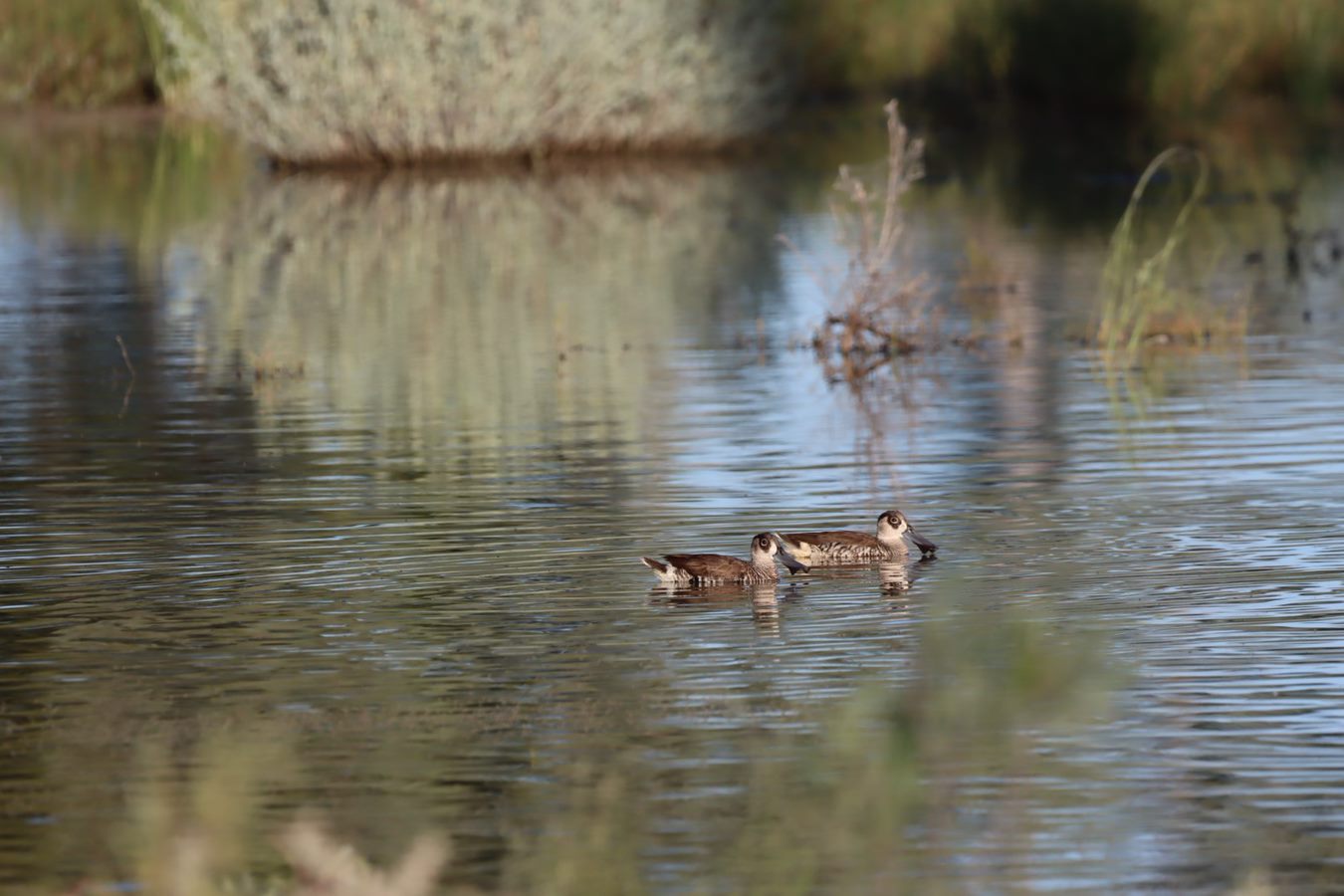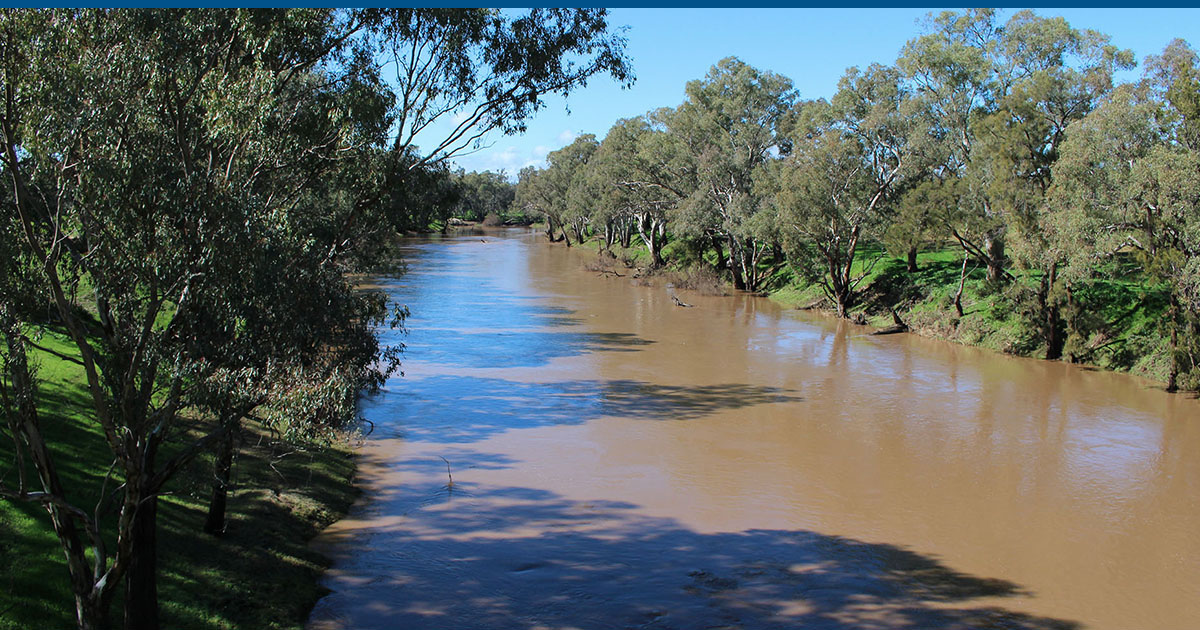Commonwealth water for the environment supports breeding ducks in the Western Floodplain
Author: Tamara Kermode | Traditional Paakantyi Language of the Kurnu-Baakandji nation used in this article. (L. A. Hercus – Paakantyi Dictionary).
The 2021-22 water year (July 1 – June 30) was the wettest in the Murray-Darling Basin (the Basin) for a decade. In Toorale National Park (Toorale) this meant relatively wet conditions with flooding flows from both the Darling-Baaka and Warriku (Warrego) Rivers. Commonwealth water for the environment was used to augment natural events, increase inundation duration and improve the environmental health of the system. Upstream rainfall in late 2022 contributed to a flow pulse through the Warriku River which contained 6% water for the environment. Peak inundation of the Warriku River channel and Western Floodplain occurred on 6 December 2022 (9,119 ha of floodplain inundation), which was the largest extent since April 2020.
Following the large inundation event Flow-MER scientists Jared Reid and Emeritus Professor Nick Reid undertook a waterbird survey. Many parts of the floodplain were still wet, providing great habitat for waterbirds (Figure 1). Waterbirds surveyed included dabbling and filter feeding ducks, piscivores, large wading birds, and reed-inhabiting passerines. Many of the duck species were breeding.

At sunrise each day, behind the old irrigation quarters a diverse array of yurli (ducks) were observed loafing, feeding and preening in pools. Wilpa-thiru (plumed-whistling ducks; Dendrocygna eytoni; Figure 2), kulthapa (grey teal; Anas gracilis), kunarli (Australian wood ducks; Chenonetta jubata), kalku (Eurasian coots; Fulica atra), manpara (Pacific black duck: Anas superciliosa) and pink-eared ducks (Malacorhynchus membranaceus; Figure 3) rested on the water or in adjacent vegetation and black-tailed native hens (Tribonyx ventralis) waded in the shallows as other waterbird species flew overhead. A flock of thiyara (red-tailed black cockatoos; Calyptorhynchus banksii) with their mournful calls roosted in the kumparla (coolabah; Eucalyptus coolabah) and kurkuru (black box; E. largiflorens) woodland each afternoon.

The copious and healthy wetlands provided for an abundance of waterbirds and other birds, particularly brown songlarks (Megalurus cruralis) and tree and fairy martins (Petrochelidon sp.).
What is abundance? In ecology, abundance refers to the total number of individuals of a species (e.g., pink-eared ducks) or group of species (e.g., dabbling and filter feeding ducks) in a given area, habitat type or ecosystem. In this case we are referring to the abundance of birds overall (i.e., both waterbirds and ‘terrestrial’ birds).
Originally published by 2rog as Issue 40 Commonwealth water for the environment supports breeding ducks in the Western Floodplain
Featured Photo: Figure 1 Ephemeral wetlands were scattered across the floodplains adjacent to the Warrego-Darling/Baaka confluence.
Photo credit: Jared Reid, 14 December 2022.

The Warrego-Darling is a unique and diverse system that supports a rich diversity of plants and animals in a constantly changing environment. Our work here is to collect data, monitor ecosystem interactions and evaluate our findings so we can provide accurate and reliable information to the Commonwealth Environmental Water Office for the effective management of environmental water.

The information on this website is presented by the Department of Climate Change, Energy, the Environment and Water (the Department) for the purposes of disseminating information to the public. It does not constitute legal or other professional advice.
The views and opinions expressed on this website are those of the authors and do not necessarily reflect those of the Australian Government or the Portfolio Ministers for the Department or indicate a commitment to a particular course of action.
While reasonable efforts have been made to ensure that the contents of this website are factually correct, the Commonwealth of Australia does not accept responsibility for the accuracy or completeness of its contents. The Department disclaims liability, to the extent permitted by law, for any liabilities, losses, damages and costs arising from any reliance on the contents of this website. You should seek legal or other professional advice in relation to your specific circumstances.
Use of this website is at a user’s own risk and the Department accepts no responsibility for any interference, loss, damage or disruption to your computer system which arises in connection with your use of this website or any linked website.